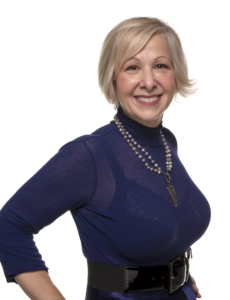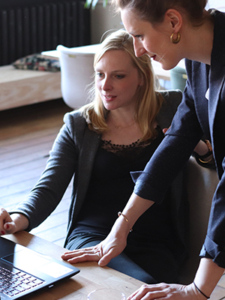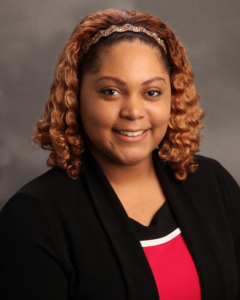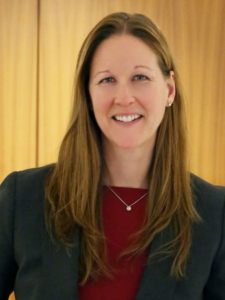 When we ignore, invalidate or suppress our negative emotions because we don’t want to feel them, or feel they are unacceptable, they do not go away.
When we ignore, invalidate or suppress our negative emotions because we don’t want to feel them, or feel they are unacceptable, they do not go away.
“Effective leaders are mindful of their inner experiences but not caught in them. They know how to free up their internal resources and commit to actions that align with their values,” writes Dr. Susan David and Christina Congleton in Harvard Business Review.
You Can’t Negate Negative Emotions
David, Harvard Medical School psychologist and author of the award-winning book, Emotional Agility, shares in her TED Talk that a third of us either judge ourselves for having “bad emotions” like sadness or anger or grief, or try to push these feelings down.
“Research on emotional suppression shows that when emotions are pushed aside or ignored, they get stronger,” says David. “Psychologists call this amplification.”
Indeed, research indicates that fighting against thoughts on addiction only magnifies them, restraining thoughts can create more stress and suppressing negative emotions spawns more emotional eating than admitting the emotions are there.
David and Congleton have found that executives and leaders can get “hooked by” negative emotions— buying into them, avoiding situations that evoke those feelings and limiting themselves. Or, by denying the negative thoughts and rationalizing them away, even pushing themselves into situations that aren’t aligned with their values.
Ultimately, suppressing or “fixing” negative emotions often ends up in cycling through the same reoccurring trigger areas of challenge for years.
The Benefits of Feeling What You Don’t Want to Feel
“The conventional view of emotions as good or bad, positive or negative, is rigid. And rigidity in the face of complexity is toxic,” says David. “We need greater levels of emotional agility for true resilience and thriving.“
Positive emotions are simply those we tend to “find pleasurable to experience”—such as joy, satisfaction, love, serenity, interest or amusement. Whereas negative emotions are simply those we don’t find pleasurable to experience—such as fear, anger, disgust, sadness, rage, loneliness and annoyance. Neither of these definitions imply the effect of having the emotion is entirely positive or negative within us, just that we judge experiencing it as so.
Apparently, a 3:1 positive/negative emotional experience ratio is necessary for a sense of flourishing, but the balance plays a part.
“One idea in the study of emotion and its impact on psychological health is overdue for retirement: that negative emotions (like sadness or fear) are inherently bad or maladaptive for our psychological well-being, and positive emotions (like happiness or joy) are inherently good or adaptive,” writes June Gruber.
So-called negative emotions have an inherent value. Negative emotions can foster detailed and analytical thinking and less stereotypical thoughts. Feelings like sadness can increase focus and help us to learn from mistakes and assess social situations better.
Negative emotions can facilitate us to go deeper into self-understanding and empathy. Being willing to experience them can build emotional resilience. They help us to evaluate our experience and detect when an area of life feels off and needs our attention.
Experiencing and accepting emotions like anger and sadness are important to our mental health. Mindfulness training has been helpful in overcoming anxiety disorders, not because it eradicated negative feelings but it trained participants to accept them.
Research has shown the ability to hold mixed emotions together at once precedes improvements in well-being, even if it’s unpleasant or difficult. Across a study of ten years, frequent experiences of mixed emotions were strongly associated with relatively good physical health and that increases in them weakened age-related health declines.
“We find that psychological well-being is not entirely determined by the presence of one type or kind of an emotion,” writes Gerber, “but rather an ability to experience a rich diversity of both positive and negative emotions.”
From Emotional Data to Values-Aligned Action
David urges us to realize that emotions are data that “contain flashing lights to things that we care about”—when we get clear on precisely what we are feeling and can respond by taking steps that are value-aligned.
“Emotions are data, they are not directives,” she caveats. “We can show up to and mine our emotions for their values without needing to listen to them.” Rather, we pay attention to how they point to what we value.
David and Congleton suggest four practices derived from Acceptance and Commitment Therapy (ACT), originally created by Dr. Steven C. Hayes.
Recognize You Are Stuck.
Recognize your own patterns. Where are you caught in rigid, repeating mental loops—your thoughts like a broken record inside that is insistent on replaying? Does the loop feel familiar from the past, like situations you’ve felt before that triggered and created similar contraction? These loops only deplete your mental resources. Notice if you often feel undervalued, for example.
Identify Thoughts and Feelings.
Label your thoughts and emotions distinctively to create emotional distance and clarity of the emotional data. If you feel you have to be available all the time for work, then you can get perspective by stating “I’m having the thought that I have to be available all the time for work.” Then you can look at what you feel and want to do.
Rather than saying “I’m sad” and being drowned by the emotion, you can say “I’m noticing that I’m feeling sad,” and create enough space to look at the data. This is a mindfulness practice that can improve behavior, well-being and promote beneficial changes in the brain.
Dr. Marsha Linehan, creator of dialectal behavior therapy, emphasizes that validating emotions requires accurate—observing and describing the event, thoughts and emotions, perhaps how it feels in your body—not interpretation or assumptions, which can invalidate and cause distrust in your internal experience.
“When he interrupted me for the second time, I felt anger and felt tightness and heat in my chest” is an observation. “I shouldn’t be so sensitive” is not.
Accept and Observe.
Rather than suppress or try to control your thoughts or emotions, even if you can’t rationally justify them or they don’t match how you think of yourself, allow them to be present. Breath ten deep breaths to check in. Rather than making them feel better, this is about making room for your raw emotions to reveal. What is going on internally and externally, and what is the energetic quality of your feelings?
If you can get underneath the emotion, are they giving you a clear signal of something that matters, for which you could respond differently?
Act in Alignment With Values.
“You don’t get to have a meaningful career or raise a family or leave the world a better place without stress and discomfort,” says David. “Discomfort is the price of admission to a meaningful life.”
When you can treat your emotions as data, you can create choices of how you respond to them to act in a way that aligns with your values.
Rather than be absorbed by or pulled into reaction by your emotions, you can be guided by your values, which is a primary focus of executive coaching. You can consider what actions will bring you closer to and further from them.
“When you take values-based actions, you will eventually arrive at a choice point,” tweets David. “Will you move toward your values and act like the person you wish to be, or will you move away from your values and act against them?”
By Aimee Hansen






